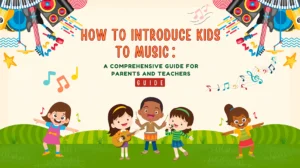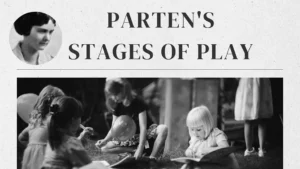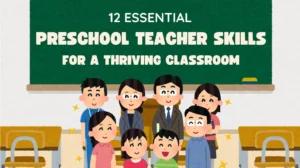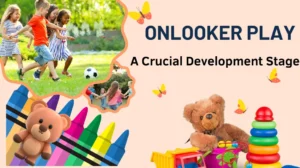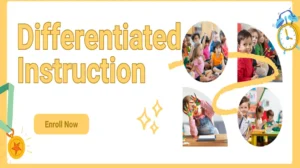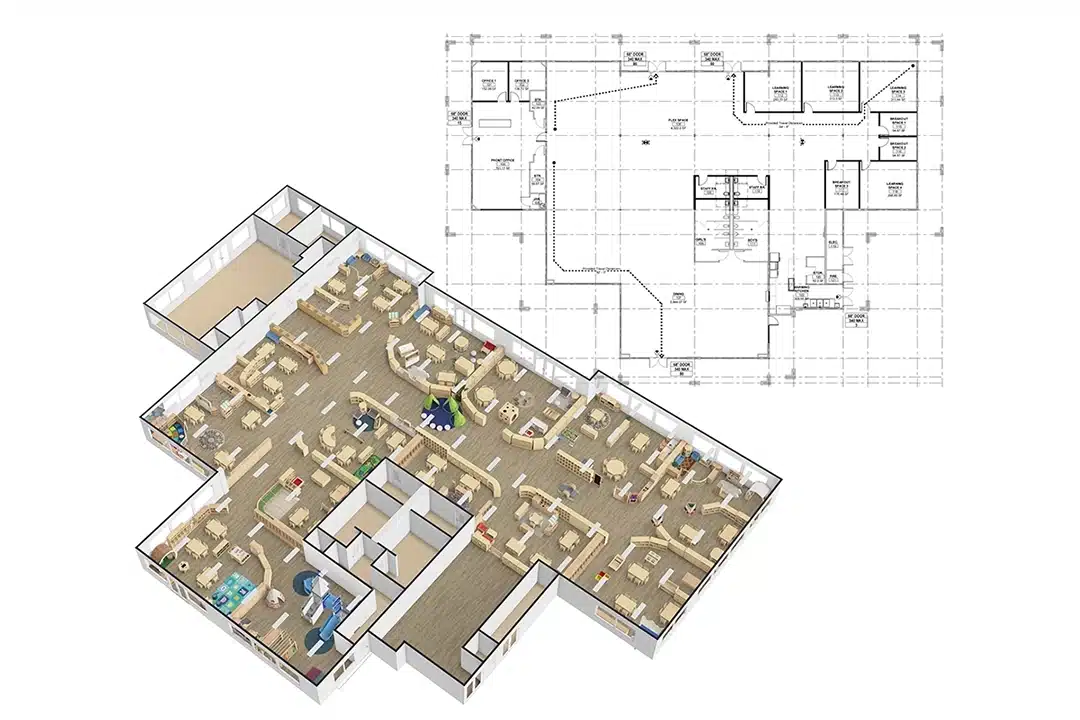Every parent and educator strives to provide the best educational environment for their children, but what makes Montessori education stand out? The 5 Principles of the Montessori Method are a set of guidelines for understanding and supporting each child’s unique needs and abilities.
Montessori education, founded by Dr. Maria Montessori, is distinguished by five key principles: respect for the child, the prepared environment, the absorbent mind, auto-education, and sensitive periods. These principles aren’t just theories; they are the pillars that uphold a unique and effective approach to early childhood learning.
Amazon founder Jeff Bezos, Google founders Larry Page and Sergey Brin, Pulitzer Prize-winning journalist Ronan Farrow, and His Royal Highness Prince George of Cambridge are the beneficiaries of a century of student-centered Montessori education that has produced some of the most innovative thinkers on the planet.
Why has the Montessori method produced so many brilliant minds? First, let’s take a look at the history and development of the Montessori method.
What is the Montessori Method?
The Montessori method was developed by Dr. Maria Montessori in the early 1900s. It’s based on the belief that children are natural learners and that education should foster independence, curiosity, and self-confidence. This method focuses on creating a prepared environment where children are encouraged to learn at their own pace, exploring subjects in a hands-on, experiential way. It contrasts with traditional education by prioritizing the child’s physical, emotional, intellectual, and social development.
The Montessori method respects each child’s learning style and emphasizes active, self-directed learning rather than passive instruction. The role of the teacher, known as a “guide” or “director,” is to facilitate learning by providing opportunities for exploration and guiding children’s development without being overly prescriptive.
The Evolution of Montessori Education
Maria Montessori, who began her professional life as a physician, created the Montessori method of education. Through her work with disadvantaged children, she transitioned from medicine to education. She utilized her training as a scientist to observe how children learn and then applied this knowledge to create a more effective method of educating children, with astounding results.

In 1907, Dr. Maria Montessori opened her first Casa Dei Bambini, or “Children’s House,” for pre-school-aged children. The Montessori method emphasizes independence, freedom within limits, and a child’s natural psychological and social growth.
Montessori education has evolved significantly since its inception in the early 20th century. From its humble beginnings in Italy, the Montessori Method has spread globally, gaining recognition for its child-centered approach. The evolution of Montessori education is marked by its adaptability to different cultural contexts and its consistent focus on the child’s developmental needs. This adaptability has led to the widespread acceptance and implementation of Montessori principles in various educational settings around the world.
Let’s explore these principles in-depth, understanding the evolution of Montessori education and assessing its suitability for your child.
Montessori Method Pros and Cons
Like any educational philosophy, Montessori method has its set of benefits and drawbacks, making it essential for educators and parents to understand both sides before adopting it. Here’s an exploration of the pros and cons of the Montessori method:

Benefits of the Montessori Method
- Fosters Independence and Self-Confidence
One of the primary benefits of the Montessori method is the emphasis on nurturing independence in children. In Montessori classrooms, children are encouraged to make choices about their activities and take responsibility for their learning. This autonomy fosters self-confidence as children learn to trust their abilities and make decisions based on their interests and needs. - Encourages Active Learning
The Montessori method strongly emphasizes hands-on, experiential learning. Children actively engage with materials and concepts, which promotes deeper understanding and retention. This type of learning makes education more engaging and helps children connect theoretical knowledge with real-world applications. - Supports Individualized Learning
Since Montessori classrooms allow children to learn at their own pace, the Montessori method is particularly beneficial for students with varying learning speeds. Some children may excel in specific areas while needing more time in others. The Montessori environment provides the flexibility to accommodate these individual differences, ensuring that each child can progress according to their abilities. - Develops Critical Thinking and Problem-Solving Skills
The Montessori approach encourages children to explore, question, and find solutions independently. This learning method helps develop critical thinking and problem-solving skills as children engage with real-world problems and find solutions using the materials provided. These skills are vital for success in both academic and life situations. - Promotes Social and Emotional Development
In Montessori classrooms, children work in mixed-age groups, which fosters collaboration and social skills. Older children often help younger ones, creating a sense of community and encouraging empathy. Furthermore, the Montessori method promotes emotional development by allowing children to express their feelings, reflect on their actions, and develop self-regulation. - Encourages a Love for Learning
The Montessori method promotes intrinsic motivation. Instead of focusing on grades or external rewards, children learn for the sake of learning. This focus on exploration and discovery fosters a lifelong love of learning, as children are encouraged to follow their interests and passions.
Disadvantages of the Montessori Method
- Requires Highly Trained Educators
The Montessori method demands highly skilled and trained educators to be effective. Teachers must understand the method, observe children, create appropriate learning environments, and intervene immediately. Finding qualified Montessori-trained educators can be challenging, especially in areas where Montessori schools are less prevalent. - Not Always Compatible with Traditional School Systems
Since the Montessori method is so distinct from traditional educational systems, transitioning children from a Montessori setting to a conventional school can sometimes be difficult. The lack of a structured, standardized curriculum may pose challenges for children who are used to a more rigid and teacher-directed classroom environment. - Can Be Expensive
Montessori education can be costly for both schools and parents. The specially designed Montessori materials, the need for smaller class sizes, and the professional training for educators can make Montessori schools more expensive than traditional public education. This may make Montessori education inaccessible for some families. - Limited Focus on Testing and Standardized Evaluation
The Montessori method does not emphasize standardized testing or formal assessment methods, which are commonly used in many traditional schools. While this can benefit children who thrive in a non-competitive environment, it can also disadvantage those preparing for formal tests later on, such as college entrance exams. Sometimes, parents and educators may need to supplement Montessori learning with additional test preparation. - Lack of Structure Can Be Challenging for Some Children
While the freedom to choose activities is a significant advantage for many children, it can also be challenging for those requiring more structure. Some children may struggle to choose or stay on task without clear guidance. For these students, the open-ended nature of the Montessori method may feel overwhelming and disorienting. - Limited Teacher Intervention
The Montessori method encourages minimal teacher intervention, which may not be ideal for children who need more direct instruction or guidance. Children may sometimes not receive the support they need to fully grasp certain concepts or skills, especially if they are struggling. Depending on the child’s needs, this reliance on self-direction can be both a strength and a weakness.
The Five Principles of Montessori Method
1. Respect for the Child
“Respect for the child” is a core principle of Montessori method. It promotes the view of the child as an individual with his or her own rights, preferences, and abilities. This principle encourages adults to observe children closely, to understand their needs and to support their natural developmental path. In a Montessori environment, children are free to choose their own activities and work at their own pace, developing independence and self-confidence.
In addition, Montessori teachers observe children’s behavior without judgment and model respect for all students and peaceful conflict resolution.
2. A prepared environment
According to the Montessori method, children learn best in an already-established environment so they can take care of themselves.
In Montessori education, a “prepared environment” is a carefully arranged space designed to promote independent learning and exploration. This environment is stocked with age-appropriate materials to satisfy children’s natural curiosity. Everything in a Montessori classroom has a purpose, from child-sized furniture to specific learning materials that encourage hands-on learning and help develop fine motor skills and cognitive abilities.
3. The Absorbent Mind
“Absorptive thinking” is a fundamental concept in Montessori philosophy that emphasizes the idea that young children effortlessly absorb information from their environment. During the first six years of life, a child’s brain acts as a sponge, soaking up the fundamentals of language, culture, and human behavior. This principle emphasizes the importance of providing an enriched and nurturing environment during the formative years.
4. Auto Education
“Auto education” or self-directed learning is the hallmark of Montessori method. It is based on the belief that children have an innate desire to learn and that they can educate themselves if given a properly prepared environment and the freedom to choose their activities. Montessori teachers give children space, ideas, direction and the support they need to learn on their own. This approach encourages children to explore, experiment and learn from their discoveries, fostering a love of learning and independence.
5. Sensitive Periods
“Sensitive periods” are specific times in a child’s development when he or she is particularly receptive to learning certain skills. During these periods, children demonstrate a strong interest and ability to acquire knowledge in specific areas, such as language, motor or sensory experiences. Montessori method aims to identify and nurture these sensitive periods, providing the right tools and environment for optimal learning.
- Order Phase: Birth to Age 5
The phase of Order spans from birth up to five years. During this period, children begin to develop reasoning, organization skills, and an understanding of their environment. Characteristics of this phase often include repetitive behaviors and a desire for consistency, routines, and structure. Children may show a preference for organizing and arranging objects over playing with toys. - Language Stage: Speech, Writing, and Reading
The Language Stage in Montessori is about the development of verbal, written, and reading skills. The oral language sensitive period starts around 7 months, continuing up to 3 years, where children begin imitating sounds and mouth movements, developing verbal communication skills.
The writing sensitive period typically occurs from around 3 1/2 to 4 1/2 years, while the reading sensitive period starts from about 4 1/2 years and continues until 5 1/2 years. Fostering a language-rich environment is key to supporting your child in developing these skills. This can be achieved through clear conversations with them and others, singing to them, and reading to them. - Sensory Skills Stage: Birth to Age 5
The Sensory Skills Stage starts from birth and lasts until the age of 5. This is when children truly begin to understand and refine their senses. The first sensory phase, starting at one year, is marked by a fascination with small objects and details, ending as the child starts to grasp the connection between order and detail. The second phase begins at age 2, characterized by an interest and desire to engage in learning experiences that integrate the senses. Providing activities that allow exploration of different textures and landscapes helps promote sensory development. - Motor Skills Phases: Birth and Age 2 Onwards
The Motor Skills Stage is divided into two phases. The first phase involves the development of crawling, pulling up, and eventually walking. Muscle development and hand-eye coordination are also key components of this stage. The second phase, beginning at age 2, focuses on enhancing grip strength and dexterity. Play in outdoor and park settings is an excellent way to encourage this skill development. - Social Skills Phase: Starting at Age 2
The Social Skills Phase, beginning at age 2, is when children start recognizing their part in a group. They may shift their skills and interests towards social interactions during this period. Developing friendships and participating in cooperative play become increasingly important. Teaching your child simple manners like saying “please” and “thank you” and providing ample social opportunities to interact with peers are great ways to ensure the healthy development of social skills.
Determining whether Montessori education is suitable for your child depends on various factors, including your child’s learning style and your family’s educational values. Montessori method is ideal for children who thrive in a self-directed learning environment and benefit from a hands-on approach. It suits families who value independence, creativity, and a holistic approach to education. However, it’s important to consider the individual needs of your child and ensure that the chosen educational approach aligns with their personality and learning style.
Montessori Classroom
The Montessori classroom is designed to be a dynamic, child-centered environment that encourages exploration, independence, and self-directed learning. Unlike traditional classrooms, which often feature rows of desks and a teacher at the front, the Montessori classroom is organized in a way that allows children to move freely, choose their activities, and work at their own pace. This unique setup is an essential part of the Montessori method, designed to cultivate the child’s natural curiosity and love for learning.
Organized and Prepared Environment
The organization of a Montessori classroom is central to its success. Every item in the room has a specific place, and the Montessori classroom layout is carefully designed to promote independence, concentration, and freedom of movement. The space is usually divided into areas or “learning centers” that cater to different activities such as practical life, sensorial exploration, math, language, and cultural studies.

- Child-Sized Furniture
Montessori classroom furniture is designed to be child-sized, allowing children to work at tables, shelves, and mats that are within their reach. This encourages autonomy, as children can independently select materials, engage with them, and return them to their designated places when they’re done. - Open Shelving
Shelving is typically low and accessible to children. Montessori classrooms use open shelving systems, which allow children to clearly see the materials available to them. The items are arranged to encourage organization and independence, and the materials are rotated periodically to ensure that they remain engaging. - Defined Learning Areas
The classroom is divided into distinct areas to create different zones for various types of learning. For example, there might be a practical life section, a sensory exploration area, a language corner, and a math section. This organization helps children focus on specific tasks and activities that match their developmental stage. - Natural Light and Calm Colors
Montessori classrooms often feature a calm and peaceful atmosphere with natural light, simple decor, and soft, neutral colors. The aim is to reduce distractions and create a welcoming environment conducive to concentration. This setting encourages children to focus on their work without feeling overwhelmed by overstimulating surroundings.
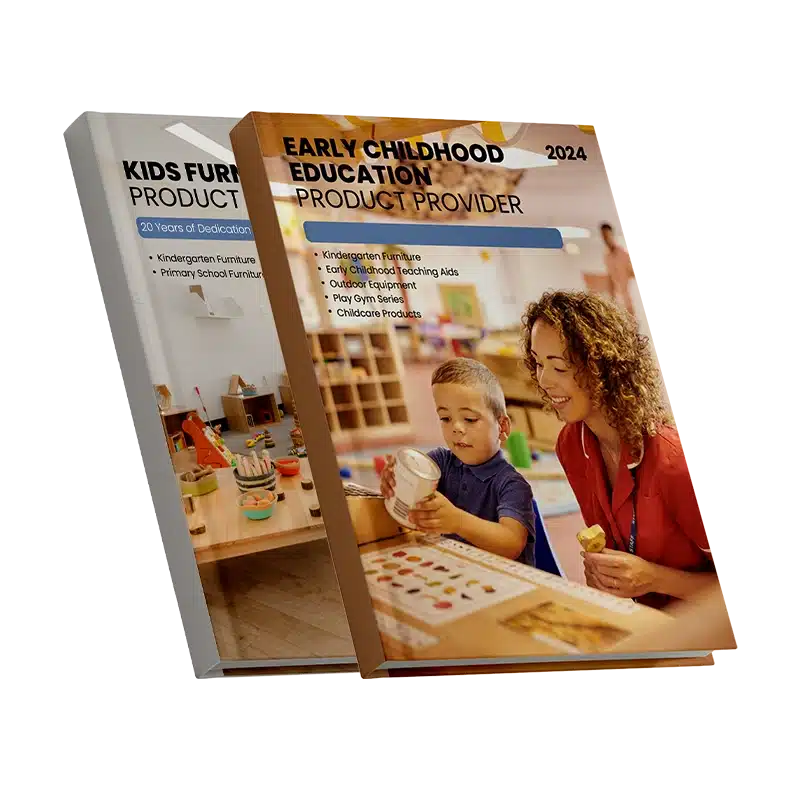
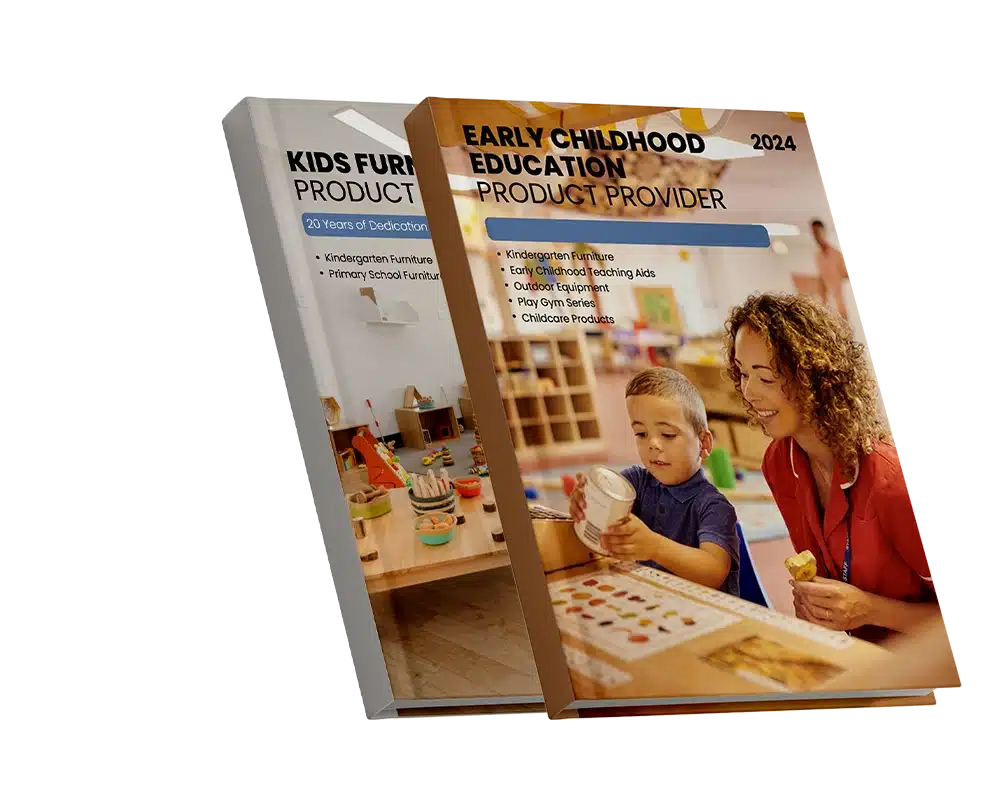
Montessori Materials
A key component of the Montessori classroom is specialized materials that allow children to learn through hands-on experiences. The materials are designed to self-correct so children can independently check their work, promoting autonomy and problem-solving skills.

Practical Life Materials
In the practical life area, children find materials that help them develop everyday life skills such as pouring, sweeping, buttoning, and cleaning. These activities are designed to enhance fine motor skills and build concentration. Children are given opportunities to practice these tasks independently, fostering confidence and responsibility.
Sensorial Materials
The sensorial area contains materials that help children refine their senses and develop an understanding of size, shape, color, texture, weight, and sound. Items like color tablets, sound boxes, and geometric solids encourage children to explore the world around them and develop a keen sense of observation.
Mathematics and Language Materials
Montessori classrooms feature various materials that help children tangibly understand mathematical and language concepts. For example, the golden bead materials help children learn about place value and operations like addition and subtraction. Sandpaper letters, movable alphabets, and wooden word puzzles are some tools that aid in language development.



Cultural Materials
Geography, history, and science materials are often found in the Montessori classroom. Maps, globes, animal figurines, and cultural artifacts allow children to explore different cultures and learn about the natural world. The aim is to foster global awareness and a sense of connection to the world around them.

Role of the Montessori Teacher (Guide)
In the Montessori classroom, the teacher’s role differs greatly from that in a traditional classroom. The teacher, or “guide,” acts as an observer, facilitator, and mentor rather than the center of attention.
- Observation and Individualization
The teacher observes children closely to understand their interests, strengths, and areas for growth. Based on these observations, the guide offers appropriate materials or introduces new activities that align with each child’s developmental stage. - Fostering Autonomy
Montessori teachers encourage children to take responsibility for their learning. By fostering an environment that values independence and decision-making, the teacher ensures that the child’s natural curiosity and intrinsic motivation remain intact. - Minimal Intervention
One of the key principles in a Montessori classroom is minimal intervention by the teacher. Instead of directing all the activities, the teacher steps in only when necessary, providing guidance or clarification when a child requires assistance. The emphasis is on the child discovering solutions independently.
Mixed-Age Grouping
Another distinguishing feature of the Montessori classroom is the presence of mixed-age groups. In contrast to traditional classrooms, where children are grouped by age, Montessori classrooms bring together children of various ages—typically spanning three years.
- Mentorship Opportunities
In a Montessori classroom, older children often act as mentors or role models for younger children. This structure helps foster leadership skills, compassion, and a sense of responsibility as older children assist younger ones with their tasks and activities. - Natural Learning Progression
Mixed-age classrooms create an environment where children can progress at their own pace. Younger children have the opportunity to observe and learn from older children, while older children solidify their understanding of concepts by teaching and helping others. This multi-age grouping helps create a more harmonious learning community and allows children to progress through their developmental stages naturally.
Montessori Curriculum
The Montessori curriculum is carefully designed to support the development of children at various stages. It spans a wide range of subjects and integrates them in ways that encourage deeper learning and critical thinking.

Practical Life Skills
These activities focus on real-life tasks that children can use daily, such as pouring, sweeping, or buttoning. They build motor skills, concentration, independence, and confidence, laying the foundation for more complex learning later.
Sensorial Education
Montessori believed that children learn through their senses. Sensorial materials help children develop their sensory perceptions and refine their ability to discern differences in texture, size, shape, weight, and color. This helps children build an understanding of abstract concepts through physical experience.


Mathematics
The Montessori approach to math is hands-on and concrete. Children use materials like number rods and beads to explore mathematical concepts such as counting, addition, subtraction, multiplication, and division. The focus is on understanding the “why” behind numbers rather than just memorization.
Montessori Language
The Montessori method promotes language development from early childhood. Children are introduced to language through storytelling, reading, and writing activities, which encourage verbal communication and literacy skills. The curriculum supports the development of vocabulary, grammar, and composition.


Cultural Studies
Cultural studies in a Montessori setting introduce children to geography, history, art, and science. These subjects are often integrated into interdisciplinary lessons that provide context and stimulate a child’s natural curiosity about the world around them.
Montessori vs Traditional Education
When it comes to education, the Montessori method and traditional education systems represent two different approaches to teaching and learning. While both aim to foster academic success and development, they differ significantly in terms of philosophy, classroom structure, and teaching methodologies. Below is a comparative table that highlights the key differences between the Montessori method and traditional education:
| Aspect | Montessori Education | Traditional Education |
|---|---|---|
| Teaching Philosophy | Child-centered, with learning guided by the child’s interests. | Teacher-centered, with structured lessons and direct instruction. |
| Classroom Setup | Open shelving, child-sized furniture, and flexible spaces for movement. | Desks in rows, limited movement, teacher at the front. |
| Learning Approach | Hands-on learning through exploration. | Focus on lectures, textbooks, and assignments. |
| Curriculum | Individualized, flexible to child’s pace and interests. | Standardized, follow a set timeline and curriculum for all. |
| Role of Teacher | Guide and observer, offering support when needed. | An authority figure, leading lessons and managing the classroom. |
| Age Grouping | Mixed-age groups promoting peer learning. | Same-age groups, students learn together by grade. |
| Assessment | Observation and self-reflection, no formal tests. | Formal tests, quizzes, and grades. |
| Focus on Independence | High, with children making their own choices. | Lower, children follow teacher instructions. |
| Social Skills | Encourages collaboration across ages. | Social skills develop through structured group work. |
Conclusion
The 5 principles of the Montessori method offer a comprehensive framework for nurturing children’s physical, intellectual, and emotional development. Alongside understanding its historical evolution and assessing its suitability for individual children, Montessori method stands as a testament to the enduring power of respecting and supporting the natural development of each child.



